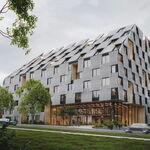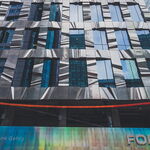My personal experience with left-turns is - especially in Toronto, given the volume of traffic, and especially on 4-lane roads - it demands a driver's full concentration just to monitor oncoming cars to watch for a safe gap to make the turn. This is especially difficult if (as shown in the video posted above) there is a large vehicle facing the driver that is also trying to turn left - it blocks the view of the other lane, making a left turn extremely risky. It's also common for oncoming drivers to change lanes on the fly (and at full speed) to get around the vehicle that has stopped to make a left turn.... so the right lane may be clear one moment but suddenly is no longer clear.
And only then, when the driver is certain they have a clear gap in oncoming traffic, do they turn their attention to the pedestrian crossing.... and there's a whole second guessing game and potential for surprises. And, with the traffic gap potentially closing, there is an impulse control exercise to not gun it and try to get through, regardless of pedestrian presence or safety. With time pressure both in terms of wanting to not have to wait another cycle, and potentially causing impatience in following drivers.
The perfectionist might argue that drivers must always be patient, and must constantly shift focus - so back and forth between oncoming vehicles and the pedestrian crosswalk - and while I agree, drivers are human, and that limits things.
All of which says to me - left turn lanes are the preferable design, where space is available..... and discrete left turn arrows (with pedestrians not having "walk" rights) in the cycle is also preferable, if that can be achieved without creating backups.
- Paul





